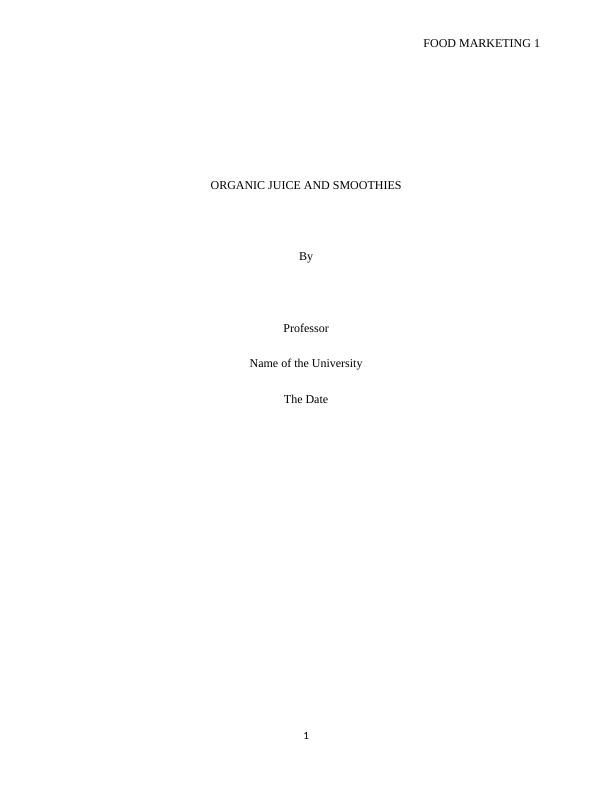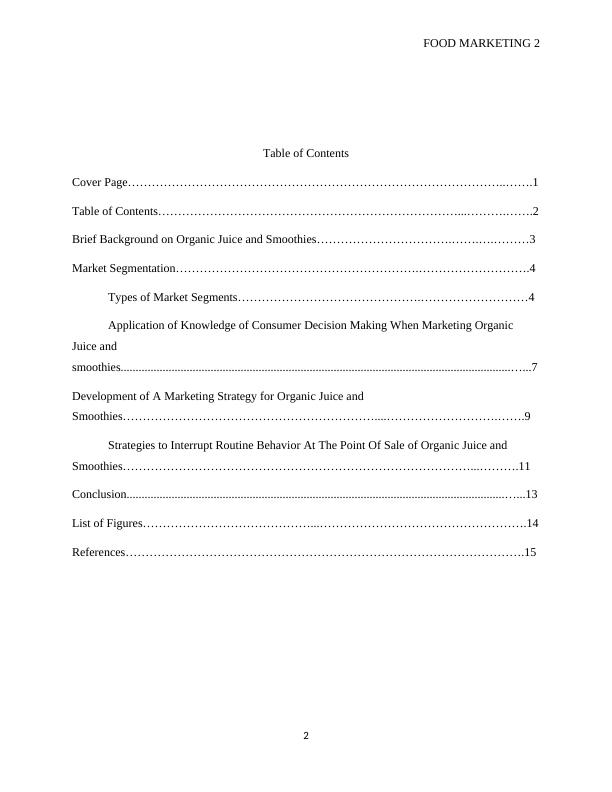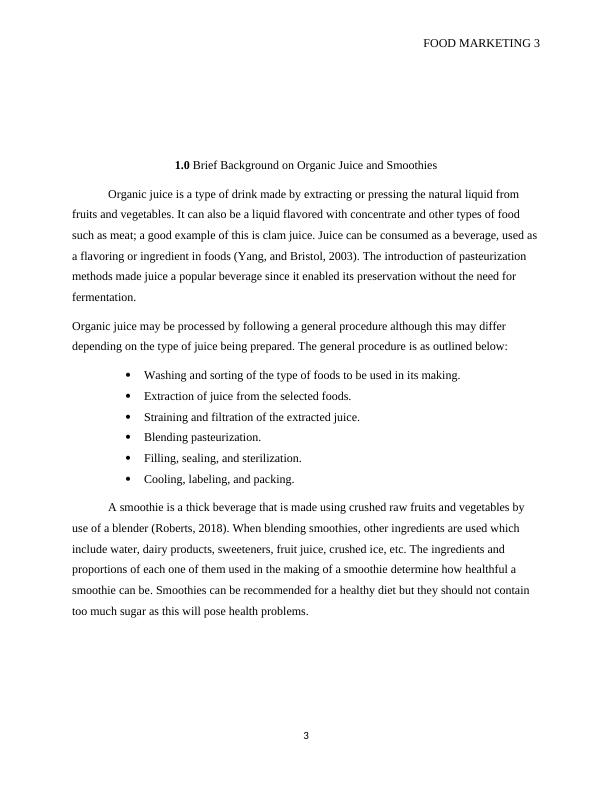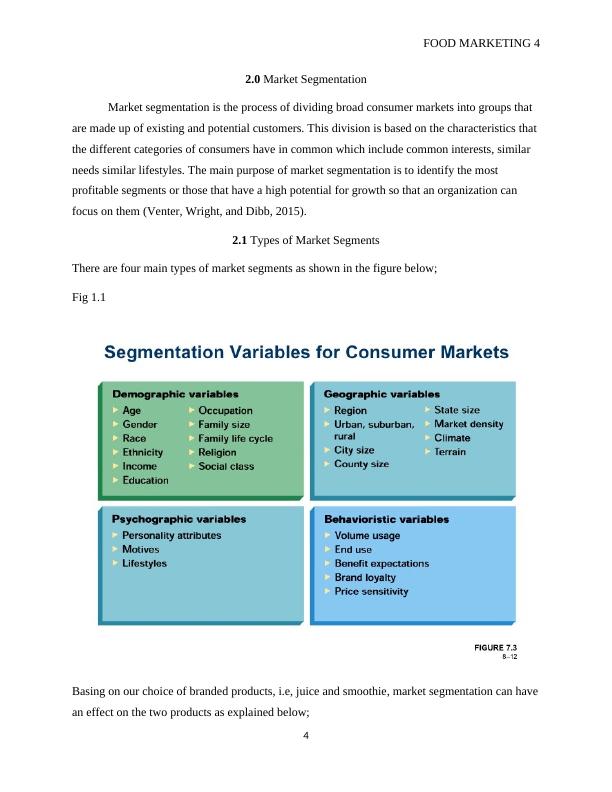Organic Juice and Smoothies: A Marketing Strategy
Rubric Task 3 for MKG721 Food Marketing course in S3 2017 requires a Marketing Plan Report. The task involves presenting a brief background to the industry and product, identifying and profiling key market segments, and applying knowledge of consumer decision making for the product category.
16 Pages2829 Words158 Views
Added on 2023-06-04
About This Document
This article discusses the marketing strategy for organic juice and smoothies, including market segmentation, consumer decision making, and the marketing mix. It also explores strategies to interrupt routine behavior at the point of sale.
Organic Juice and Smoothies: A Marketing Strategy
Rubric Task 3 for MKG721 Food Marketing course in S3 2017 requires a Marketing Plan Report. The task involves presenting a brief background to the industry and product, identifying and profiling key market segments, and applying knowledge of consumer decision making for the product category.
Added on 2023-06-04
ShareRelated Documents
End of preview
Want to access all the pages? Upload your documents or become a member.
Making a Smoothie: Description, Specification, Shelf Life, and Uses
|7
|1616
|444
Inter-NATIONAL MARKETING by Name: Faculty, Tutor, City, State
|11
|2520
|289
Comparison between Aquaball and The Green Moustache for Nutrition and Food Choice
|7
|407
|440
Real Juice Products: Target Audience and Social Media Channels
|6
|1091
|173
Marketing Mix Assignment Sample (Doc)
|11
|3234
|394
Mocktails & Beer
|18
|762
|79




